Transforming your basement into a functional and inviting space starts with selecting the right drop ceiling design. Drop ceilings offer practical benefits like easy access to utilities while providing countless opportunities to enhance your basement's aesthetic appeal. From classic acoustic tiles to modern metal panels, rustic wood planks to sophisticated coffered designs, the options are endless. These ceiling solutions can brighten dark spaces, improve acoustics, add architectural interest, and create the perfect atmosphere for any basement function. Whether you're creating a home theater, family room, office, or entertainment space, the right drop ceiling can completely transform your lower level into a beautiful, comfortable area that rivals any room in your home.

1. Classic White Acoustic Drop Ceiling Tiles
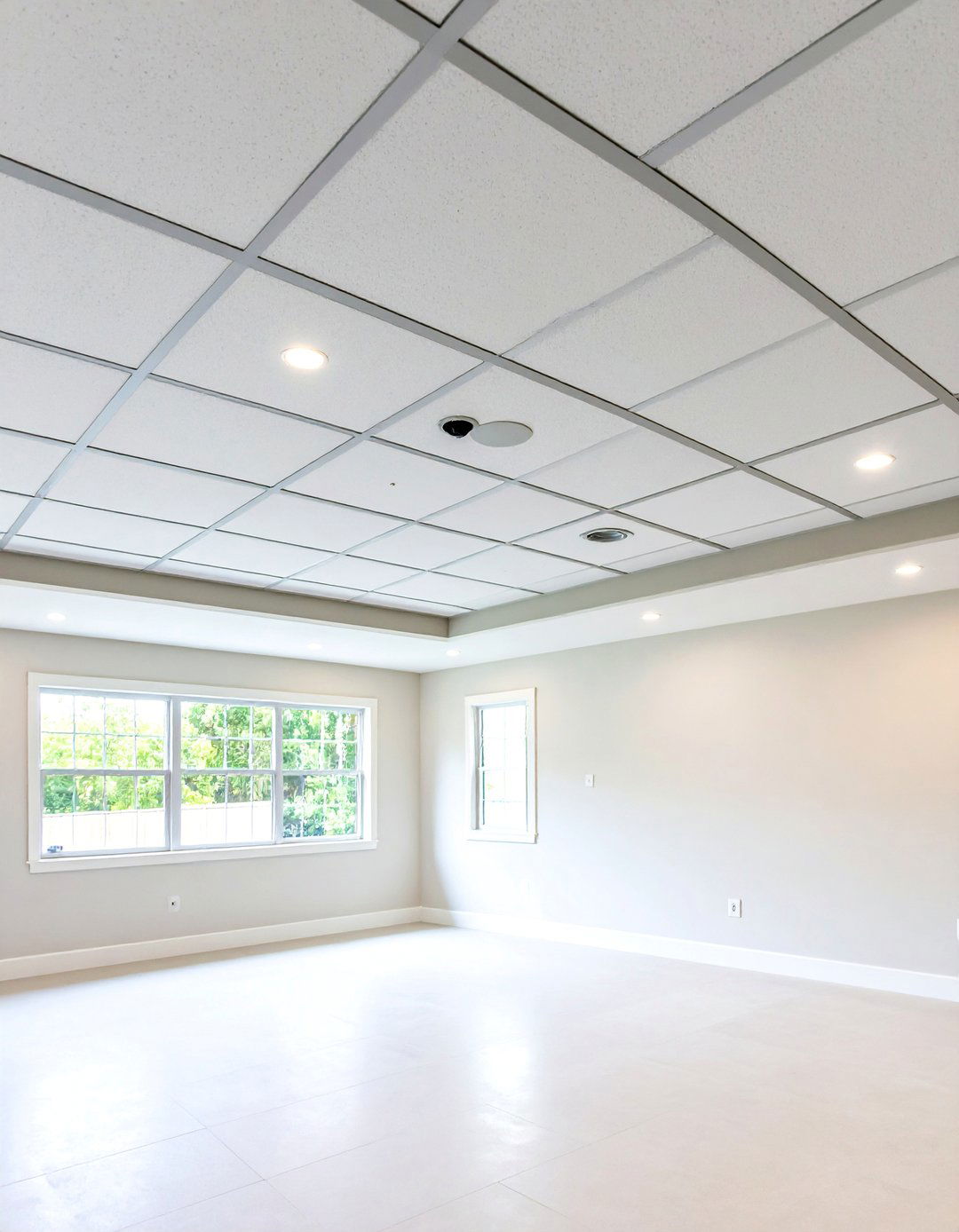
White acoustic ceiling tiles remain the most popular choice for basement drop ceilings due to their practicality and versatility. These moisture-resistant tiles typically measure 24x24 inches and fit into standard metal grid systems. The white surface maximizes light reflection, making dark basements appear brighter and more spacious. Modern acoustic tiles offer excellent sound absorption, reducing noise transmission between floors while creating a quieter environment. Many feature subtle textures that add visual interest without overwhelming the space. These tiles resist sagging and staining, making them ideal for basement humidity conditions. The clean, professional appearance works well with any decor style, from contemporary to traditional. Installation is straightforward, and individual tiles can be easily removed for utility access or replacement when needed.
2. Rustic Corrugated Metal Drop Ceiling

Corrugated metal ceiling tiles bring industrial charm and rustic appeal to basement spaces. These authentic steel panels, often salvaged from old barns, create a unique weathered appearance with natural rust patinas and galvanized finishes. Each 24x24 inch tile fits standard drop ceiling grids while adding distinctive texture and character. The metal surface reflects light beautifully, brightening basement areas while creating interesting shadow patterns. Corrugated tiles work exceptionally well in man caves, workshop areas, and entertainment spaces where a rugged aesthetic is desired. The durable steel construction resists moisture and requires minimal maintenance. Installation involves simply dropping tiles into existing grid systems. These panels can be mixed with different rust levels to create custom patterns, and they pair perfectly with exposed brick walls and industrial lighting fixtures.
3. Warm Wood-Look Vinyl Plank Ceiling

Wood-look vinyl planks offer the beauty of natural wood without moisture concerns common in basement environments. These realistic planks attach to existing drop ceiling grids using special clips, creating a seamless wood ceiling appearance. Available in various finishes including oak, cherry, walnut, and reclaimed barnwood styles, they add warmth and sophistication to any basement space. The lightweight vinyl construction won't sag or warp, and the surface is completely waterproof and easy to clean. These planks work beautifully in family rooms, home offices, and guest bedrooms where a cozy, residential feel is desired. The tongue-and-groove appearance creates continuity across the ceiling, and individual planks can be removed for utility access. Installation is relatively simple, and the finished look rivals expensive hardwood ceiling treatments at a fraction of the cost.
4. Elegant Coffered PVC Drop Ceiling System

Coffered ceiling tiles create sophisticated architectural interest typically found in luxury homes. These lightweight PVC tiles feature raised panels that mimic traditional coffered construction while fitting standard 24x24 inch drop ceiling grids. Available in deep or shallow profiles, they add three-dimensional depth and visual appeal to basement ceilings. White coffered tiles brighten spaces and create an upscale appearance, while black versions add drama and contemporary flair. The PVC construction resists moisture, mold, and mildew while remaining completely maintenance-free. These tiles work exceptionally well in home libraries, offices, and formal entertainment areas where architectural elegance is desired. Installation requires no special tools, and the tiles easily pop out for utility access. The sophisticated appearance transforms ordinary basements into refined living spaces that rival main-floor rooms.
5. Industrial Black Metal Grid Ceiling

Black drop ceiling systems create bold, contemporary statements in modern basement designs. Using black metal grid components with matching black ceiling tiles, this approach embraces the industrial aesthetic while maintaining functionality. The dark surface makes pipes, ducts, and utilities virtually disappear while creating dramatic contrast with lighter walls and furnishings. Black mineral fiber tiles offer excellent acoustic properties, making them ideal for home theaters and entertainment areas. The monochromatic scheme works particularly well with exposed brick, concrete floors, and modern industrial lighting. This design choice makes basement ceilings appear higher by creating visual depth. Installation follows standard drop ceiling procedures, but the impact is far from standard. The sleek, urban appearance appeals to contemporary design enthusiasts who want their basement to make a bold architectural statement.
6. Decorative Tin-Look Ceiling Tiles
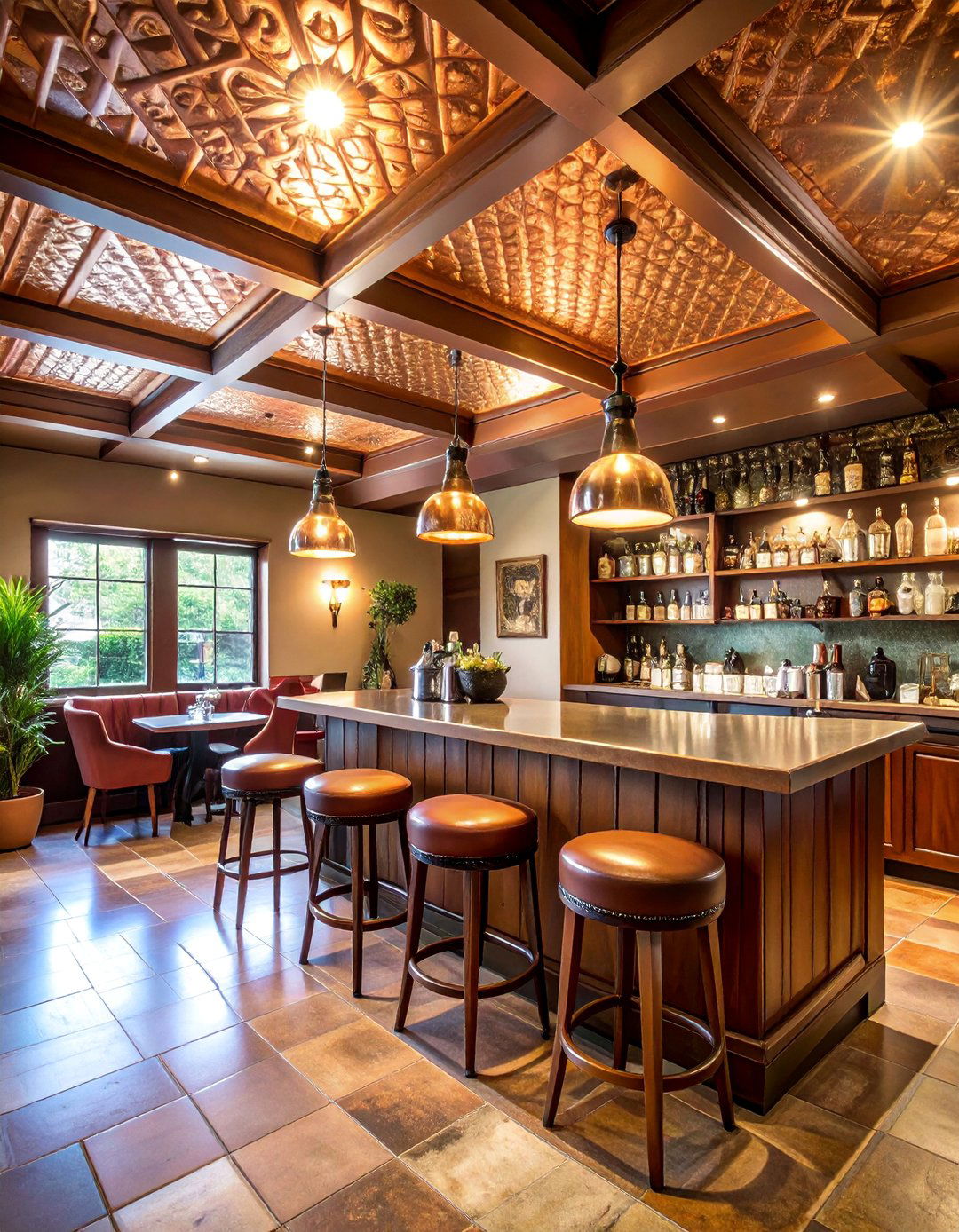
Tin-look ceiling tiles bring vintage charm and sophisticated detail to basement spaces. These embossed thermoplastic tiles replicate authentic pressed tin patterns while offering modern durability and easy maintenance. Available in traditional copper, brass, chrome, and painted finishes, they create stunning focal points overhead. The raised patterns catch and reflect light beautifully, adding visual texture and interest to plain basement ceilings. These tiles fit standard 24x24 inch drop ceiling grids and resist moisture, making them perfect for basement applications. The decorative elements work well in traditional, vintage, or eclectic design schemes, particularly in basement bars, dining areas, and entertainment spaces. Installation is straightforward, and the lightweight construction won't stress existing grid systems. The sophisticated appearance elevates basement spaces, creating the ambiance of upscale restaurants or historic buildings.
7. Modern Geometric Pattern Ceiling Design

Geometric ceiling patterns create contemporary visual interest using alternating tile styles, colors, or orientations. This design approach combines different ceiling tile types to form repeating patterns, stripes, or checkerboard effects across the basement ceiling. Common combinations include alternating smooth and textured tiles, mixing white and colored tiles, or combining different material types like metal and mineral fiber. The geometric approach works particularly well in modern basement designs where visual impact is desired. Patterns can be simple, like alternating two tile types, or complex, incorporating multiple colors and textures. This design strategy adds architectural interest without requiring custom materials or complex installation. The systematic approach creates order and visual flow while allowing creativity in material selection. Geometric patterns work well in contemporary family rooms, home offices, and entertainment areas where modern aesthetics are appreciated.
8. Acoustic Wood Slat Ceiling Panels
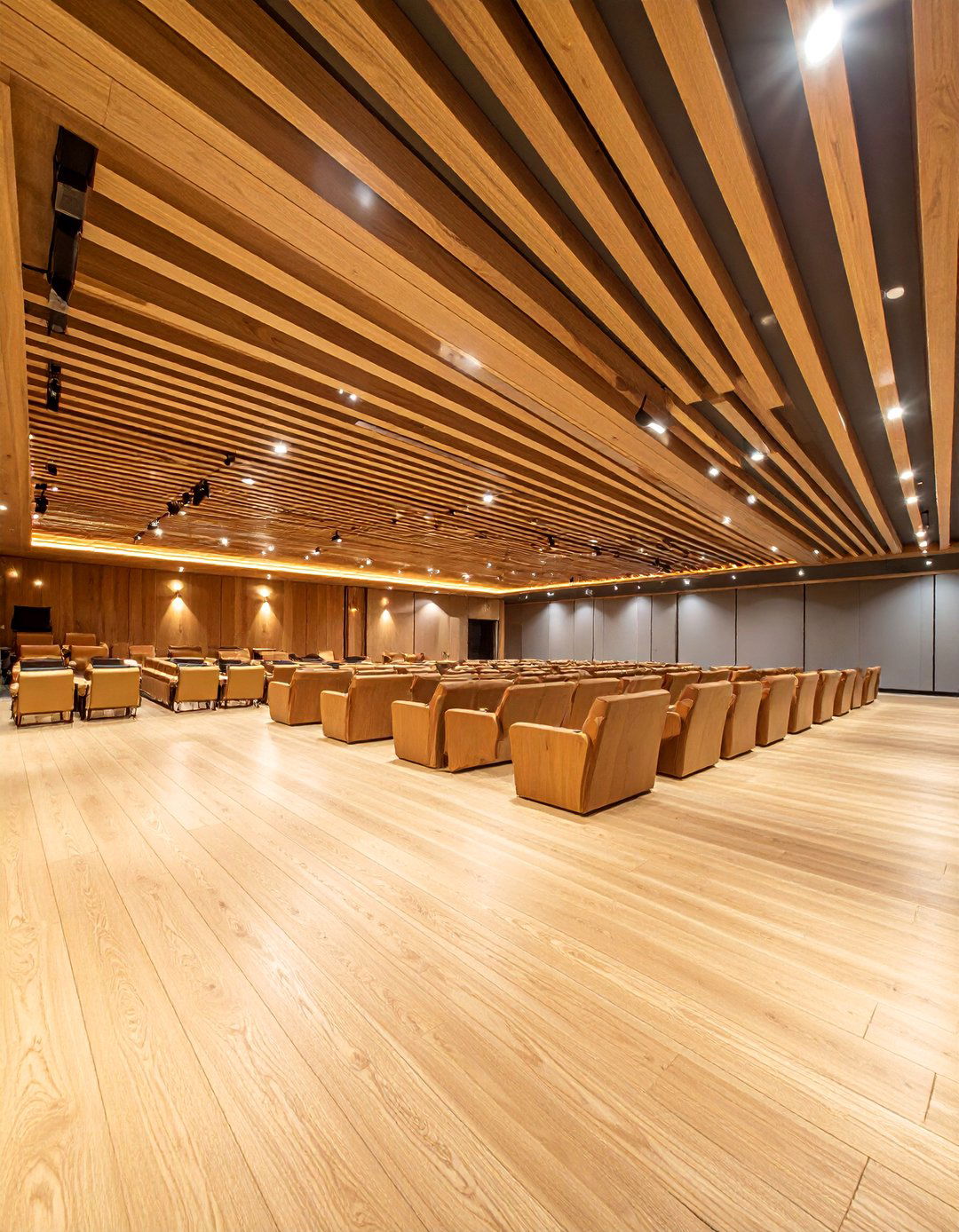
Acoustic wood slat ceiling panels combine natural wood beauty with superior sound absorption properties. These panels feature real wood veneer faces with acoustic felt backing, providing both visual warmth and noise reduction. The slat design creates linear patterns that add architectural interest while controlling sound reverberation. Available in oak, walnut, cherry, and other wood species, they can be finished with oil, varnish, or left natural. These panels fit standard 24x24 inch drop ceiling grids and offer excellent acoustic performance for music rooms, home theaters, and family spaces. The wood element adds warmth and natural character to basement environments, creating cozy, residential feelings. Installation follows standard drop ceiling procedures, and individual panels can be removed when needed. The combination of acoustic function and natural beauty makes these panels ideal for sophisticated basement renovations.
9. Bright LED-Integrated Ceiling Tile System

LED-integrated ceiling tiles revolutionize basement lighting while maintaining drop ceiling functionality. These innovative tiles feature built-in LED panels that provide even, bright illumination across the entire ceiling surface. Available in various color temperatures from warm white to daylight, they eliminate the need for traditional light fixtures while creating uniform brightness. The energy-efficient LEDs last for years and can often be dimmed for mood lighting. Some systems offer color-changing capabilities for entertainment applications. These tiles work exceptionally well in basements with low ceilings where traditional fixtures would feel cramped. The integrated approach creates clean, modern appearances while solving basement lighting challenges. Installation requires electrical connections but maintains standard drop ceiling accessibility. The result is bright, evenly lit basement spaces that feel more like main-floor rooms than typical basement areas.
10. Vintage Barn Wood Style Ceiling
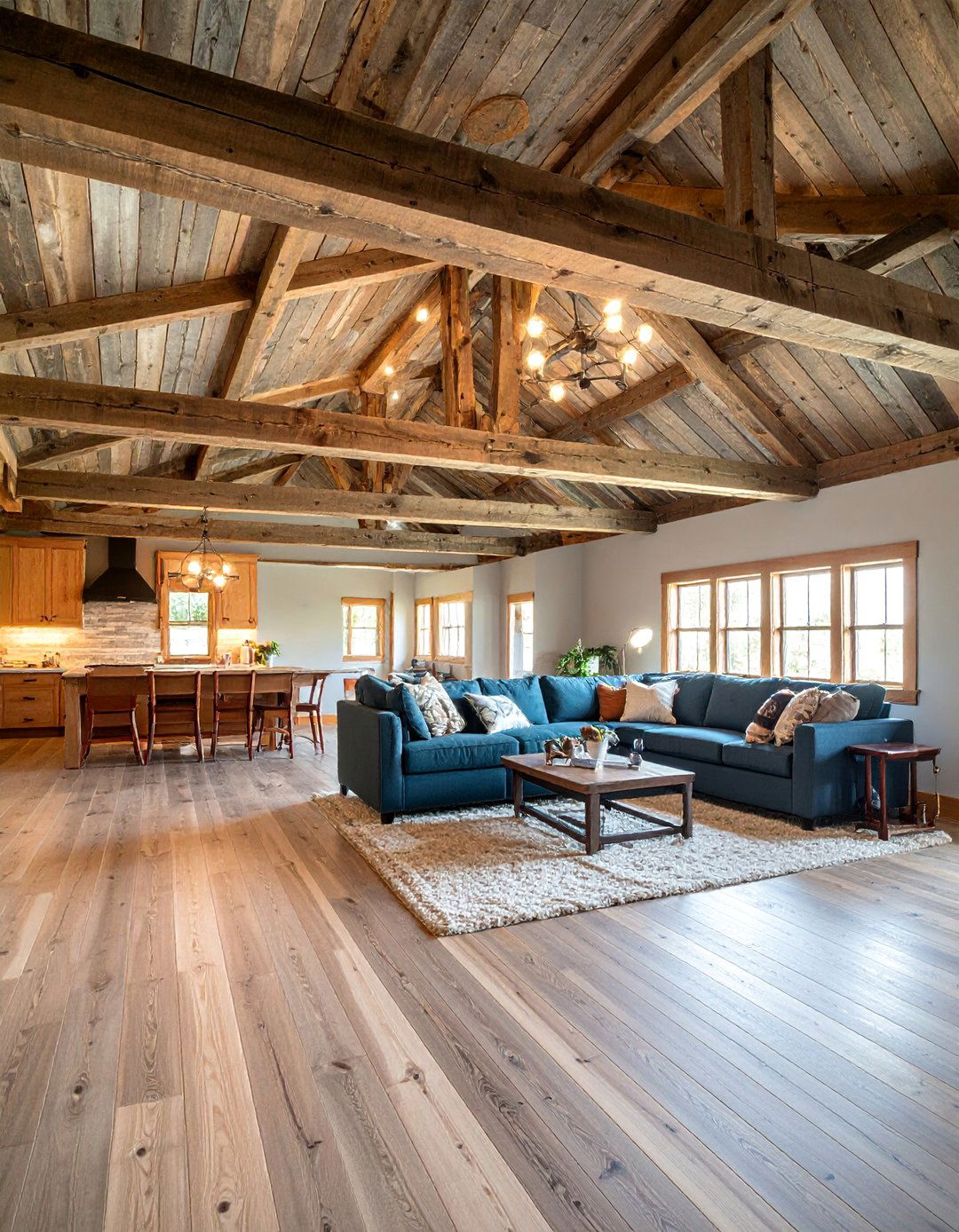
Barn wood style ceiling tiles capture rustic farmhouse charm while addressing basement moisture concerns. These vinyl or PVC tiles feature realistic weathered wood textures, complete with knots, grain patterns, and aged coloring. The authentic appearance includes variations in color and texture that mimic reclaimed barn wood without the weight or moisture sensitivity. Available in various wood tones from gray weathered to warm honey, they create cozy, country atmospheres. These tiles fit standard drop ceiling grids and resist humidity, warping, and insect damage common with real wood. The rustic aesthetic works beautifully in farmhouse-style basements, country-themed family rooms, and casual entertainment areas. Installation is simple, and the lightweight construction won't stress existing ceiling structures. The vintage appearance transforms modern basements into cozy, character-filled spaces reminiscent of historic homes.
11. Moisture-Resistant PVC Ceiling System
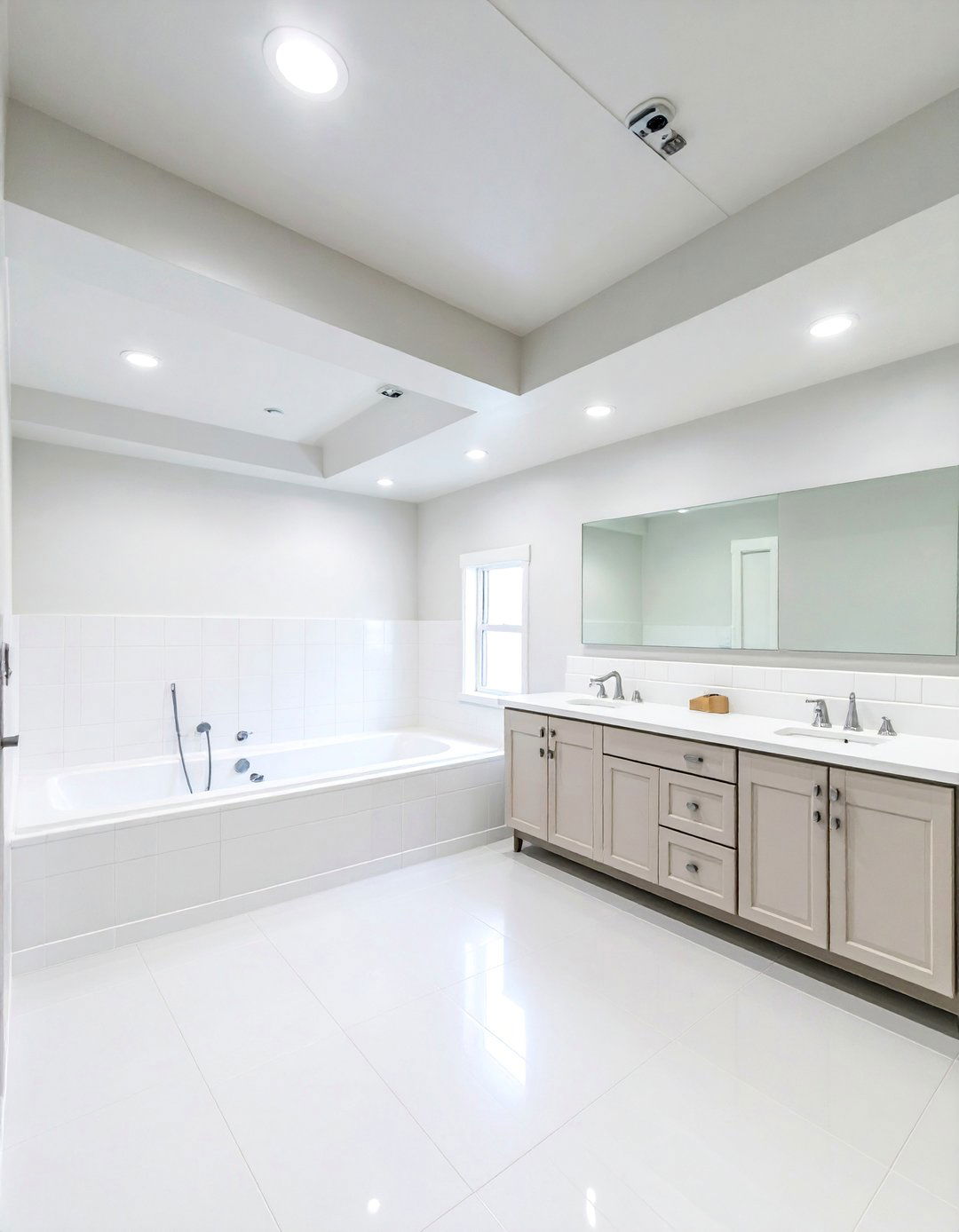
High-performance PVC ceiling systems address basement humidity challenges while providing attractive finishes. These completely waterproof tiles resist mold, mildew, and moisture damage that can affect traditional ceiling materials. Available in smooth, textured, and decorative patterns, PVC tiles maintain their appearance even in high-humidity conditions. The plastic construction allows easy cleaning with standard household cleaners, making maintenance simple. Colors remain stable and won't fade or discolor over time. These tiles work particularly well in basement bathrooms, laundry areas, and regions with high humidity levels. The moisture resistance makes them ideal for unfinished basements being converted to living spaces. Installation follows standard drop ceiling procedures, and the durable construction provides long-term reliability. The practical benefits make PVC systems excellent choices for problem basements where traditional materials might fail.
12. Contemporary Metal Mesh Ceiling Design
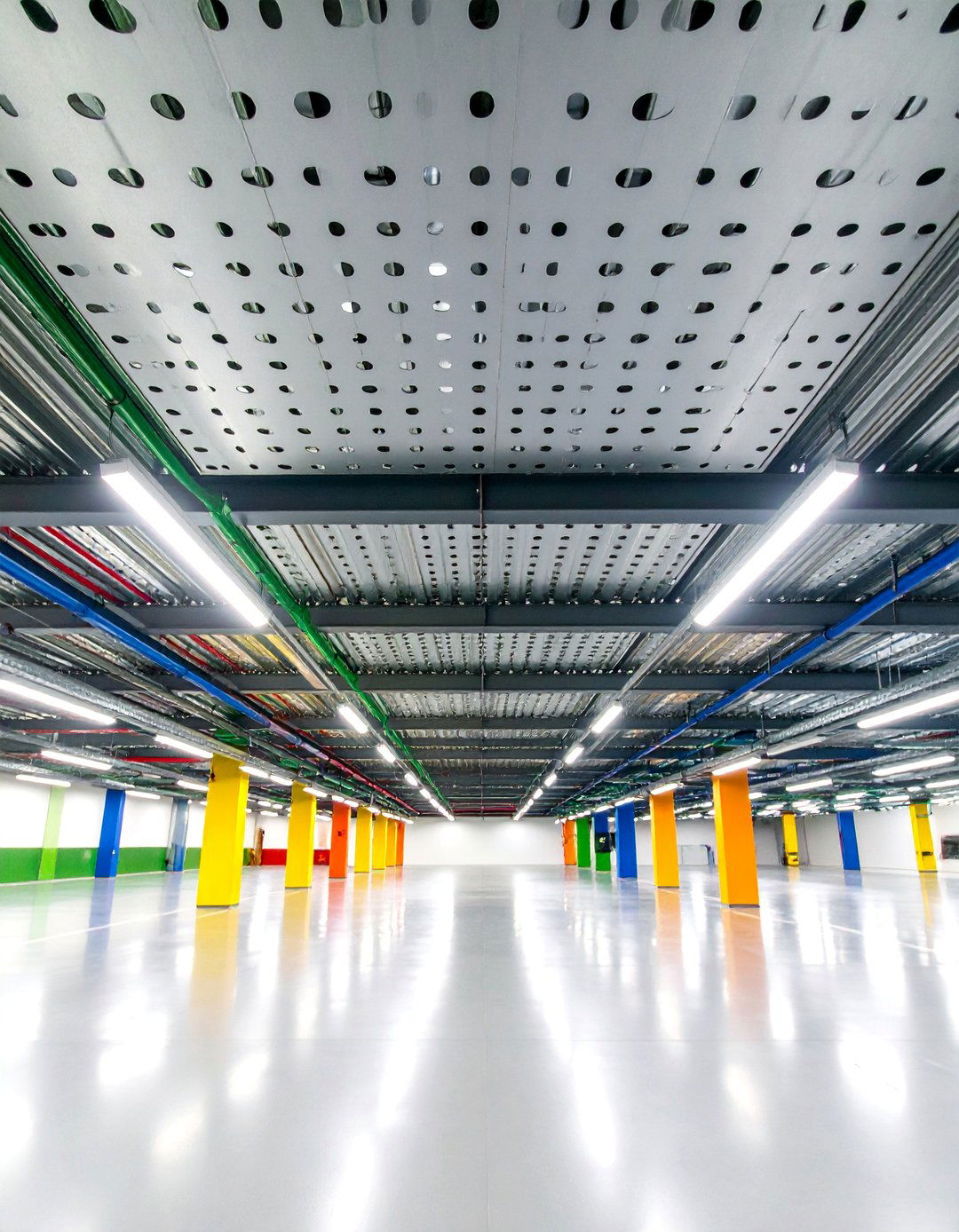
Metal mesh ceiling panels create modern, architectural interest while maintaining open-feel designs. These perforated metal tiles feature geometric patterns, circular holes, or linear slots that allow air circulation while providing visual definition. Available in aluminum, steel, and painted finishes, they complement contemporary and industrial design schemes. The open design maintains access to utilities while creating sophisticated ceiling treatments. Mesh panels work particularly well in modern basements where mechanical systems should remain accessible but hidden. The metallic finishes reflect light beautifully, brightening basement spaces while adding textural interest. These panels can be combined with solid tiles to create pattern variations or used throughout for consistent appearances. Installation requires standard drop ceiling procedures, and the lightweight aluminum construction won't overload grid systems. The contemporary aesthetic appeals to modern design enthusiasts seeking unique ceiling solutions.
13. Traditional Mineral Fiber Textured Ceiling

Traditional mineral fiber tiles offer time-tested performance with updated aesthetics for basement applications. These tiles feature subtle textures like fine fissures, random patterns, or geometric designs that add visual interest without overwhelming spaces. The mineral fiber construction provides excellent acoustic properties, sound absorption, and fire resistance. Available in various edge profiles from square to beveled, they create clean, professional appearances. These tiles work well in basement offices, guest bedrooms, and family rooms where understated elegance is desired. The neutral colors complement any decor scheme, and the texture helps hide minor imperfections in grid installation. Modern mineral fiber tiles resist sagging and moisture better than older versions. Installation follows standard procedures, and individual tiles can be easily replaced when needed. The classic approach provides reliable, attractive ceiling solutions that stand the test of time.
14. Exposed Painted Ceiling Design
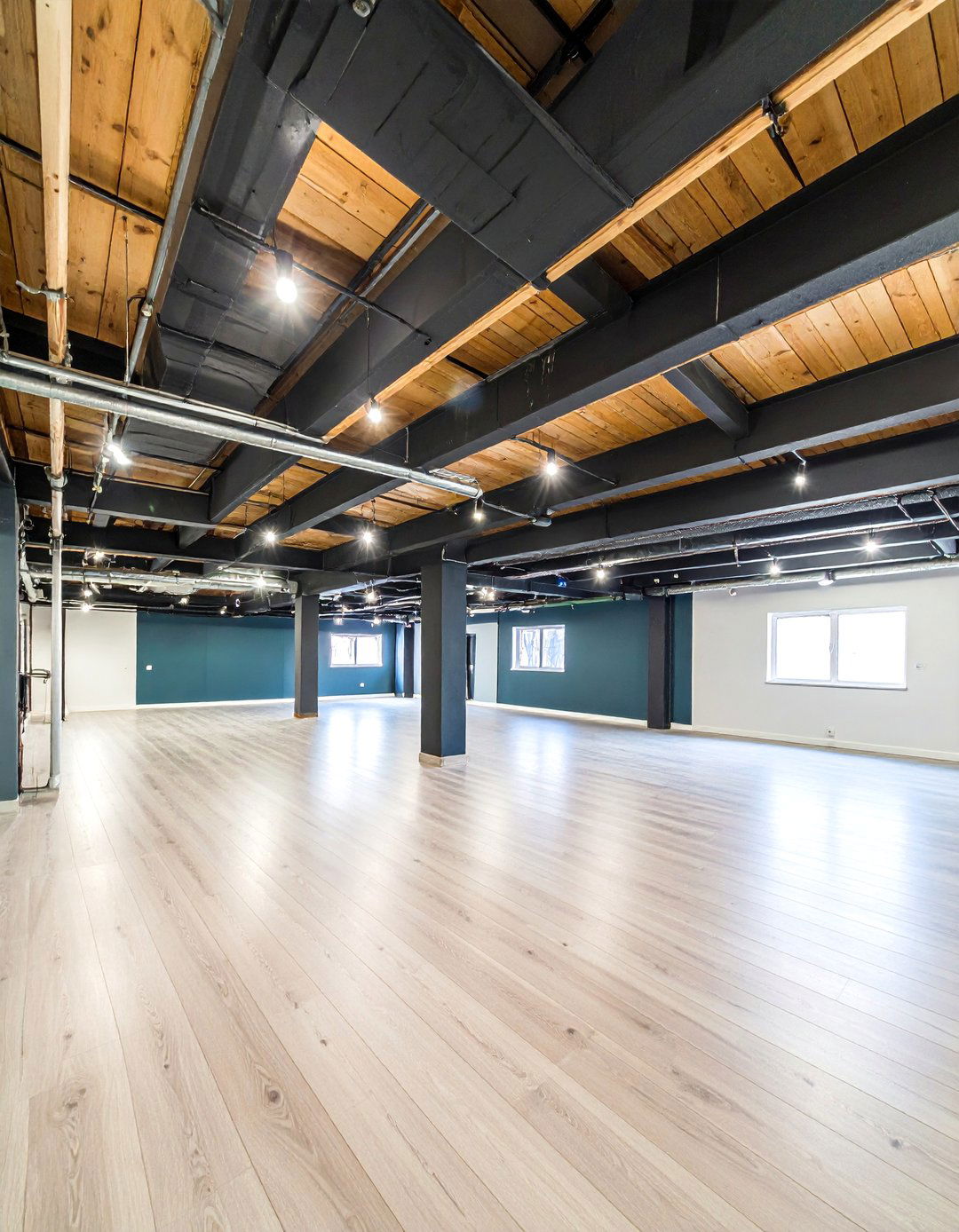
Painted exposed ceilings embrace industrial aesthetics while solving budget constraints common in basement renovations. This approach involves painting all ceiling elements including joists, pipes, ducts, and structural components in a single color, typically black, white, or dark gray. The monochromatic treatment makes utilities visually disappear while creating cohesive, intentional appearances. Black paint creates dramatic, theater-like atmospheres, while white brightens spaces and creates modern, gallery-like feelings. The exposed approach maintains full ceiling height, important in low basement spaces. Flat paint finishes minimize light reflection from irregular surfaces. This design works particularly well in contemporary, industrial, and minimalist design schemes. The painted approach requires thorough surface preparation and multiple coats for even coverage. The result is sophisticated, modern ceiling treatments that celebrate rather than hide structural elements.
15. Fabric-Wrapped Acoustic Ceiling Panels
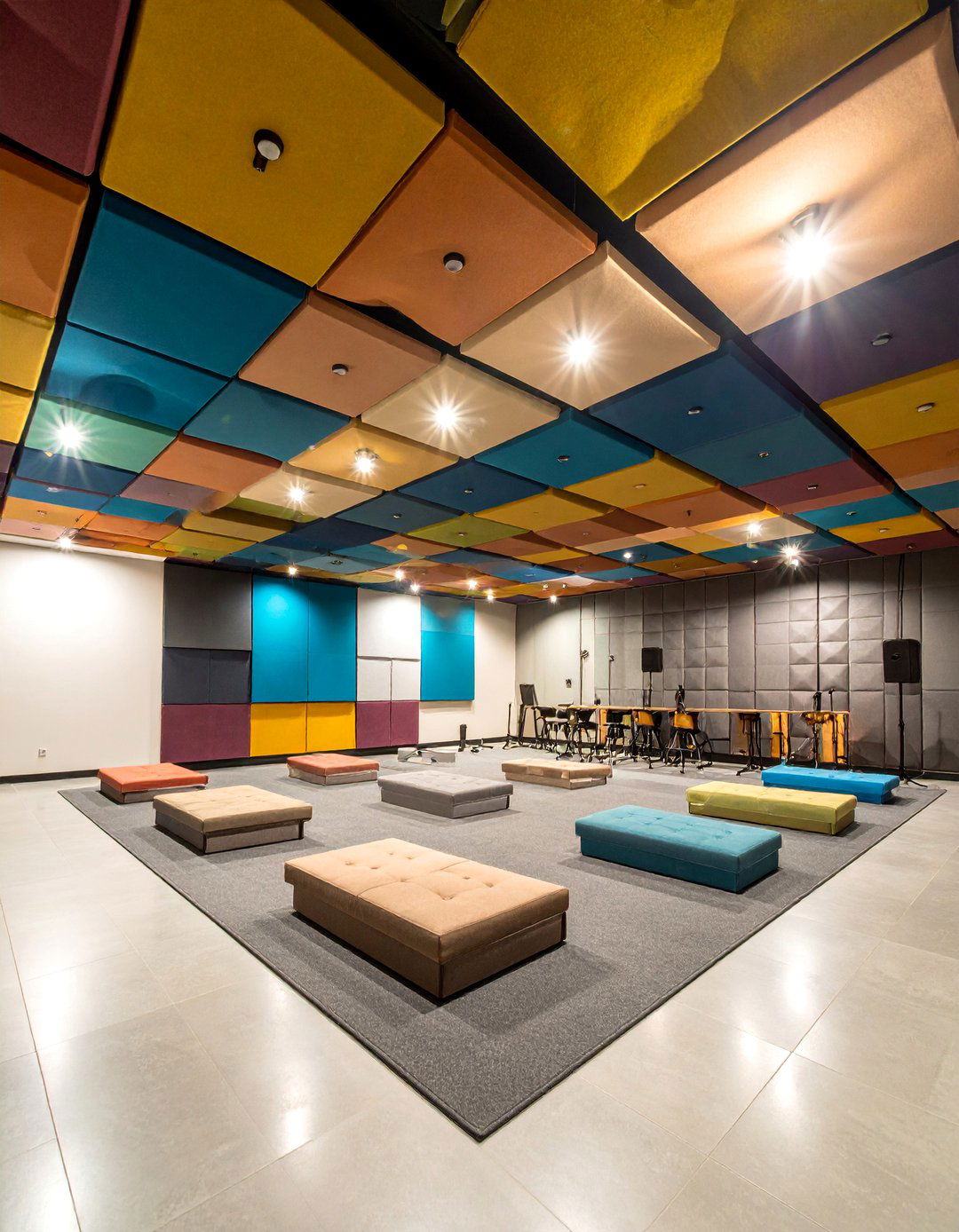
Fabric-wrapped acoustic panels combine superior sound control with customizable aesthetic options. These panels feature high-density acoustic cores wrapped in decorative fabrics, creating both functional and beautiful ceiling treatments. Available in countless fabric colors, patterns, and textures, they allow complete customization to match any design scheme. The acoustic properties make them excellent for home theaters, music rooms, and family spaces where sound control is important. Fabric options range from neutral colors to bold patterns, allowing creative expression overhead. These panels typically mount in standard drop ceiling grids or can be surface-mounted for different visual effects. The soft fabric surfaces add warmth and comfort to basement environments often perceived as cold or harsh. Installation requires careful handling to avoid fabric damage, but the finished appearance rivals custom millwork. The combination of function and beauty makes fabric panels ideal for sophisticated basement renovations.
16. Mirrored Drop Ceiling Tile System
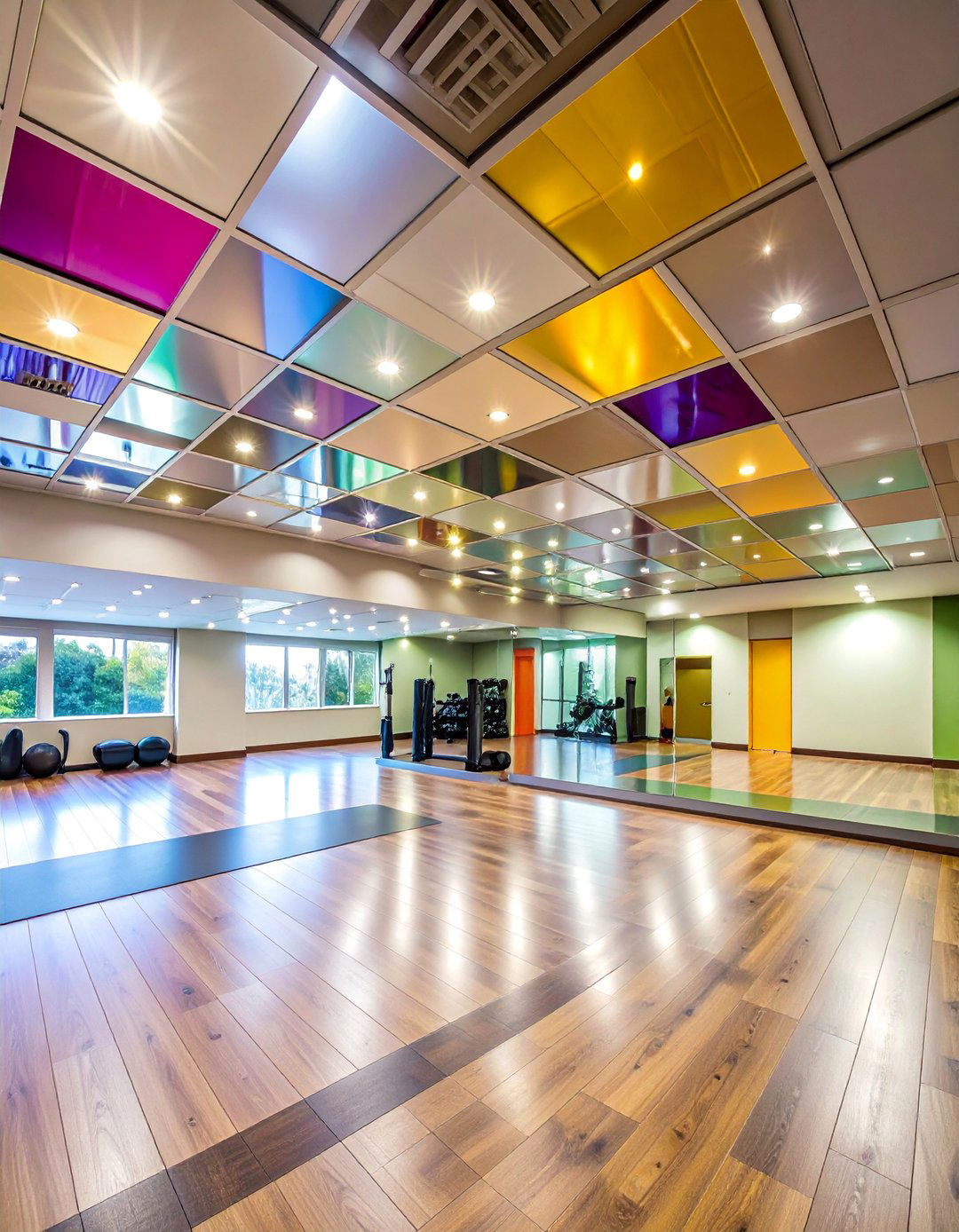
Mirrored ceiling tiles create dramatic visual expansion in small or low-ceiling basement spaces. These lightweight acrylic mirror tiles reflect light throughout the space, making basements appear larger and brighter than actual dimensions. Available in various mirror finishes from clear to bronze or smoked, they can complement different color schemes. The reflective surfaces work particularly well in home gyms, dance studios, and entertainment areas where space expansion is beneficial. Safety acrylic construction prevents injury concerns associated with glass mirrors. These tiles fit standard drop ceiling grids and can be mixed with regular tiles for accent effects rather than full coverage. The mirror surfaces require regular cleaning to maintain appearance but create stunning visual impact. Installation follows standard procedures with careful handling to prevent scratching. The dramatic effect transforms ordinary basements into visually exciting spaces that feel much larger than their actual size.
17. Natural Stone-Look Ceiling Tiles
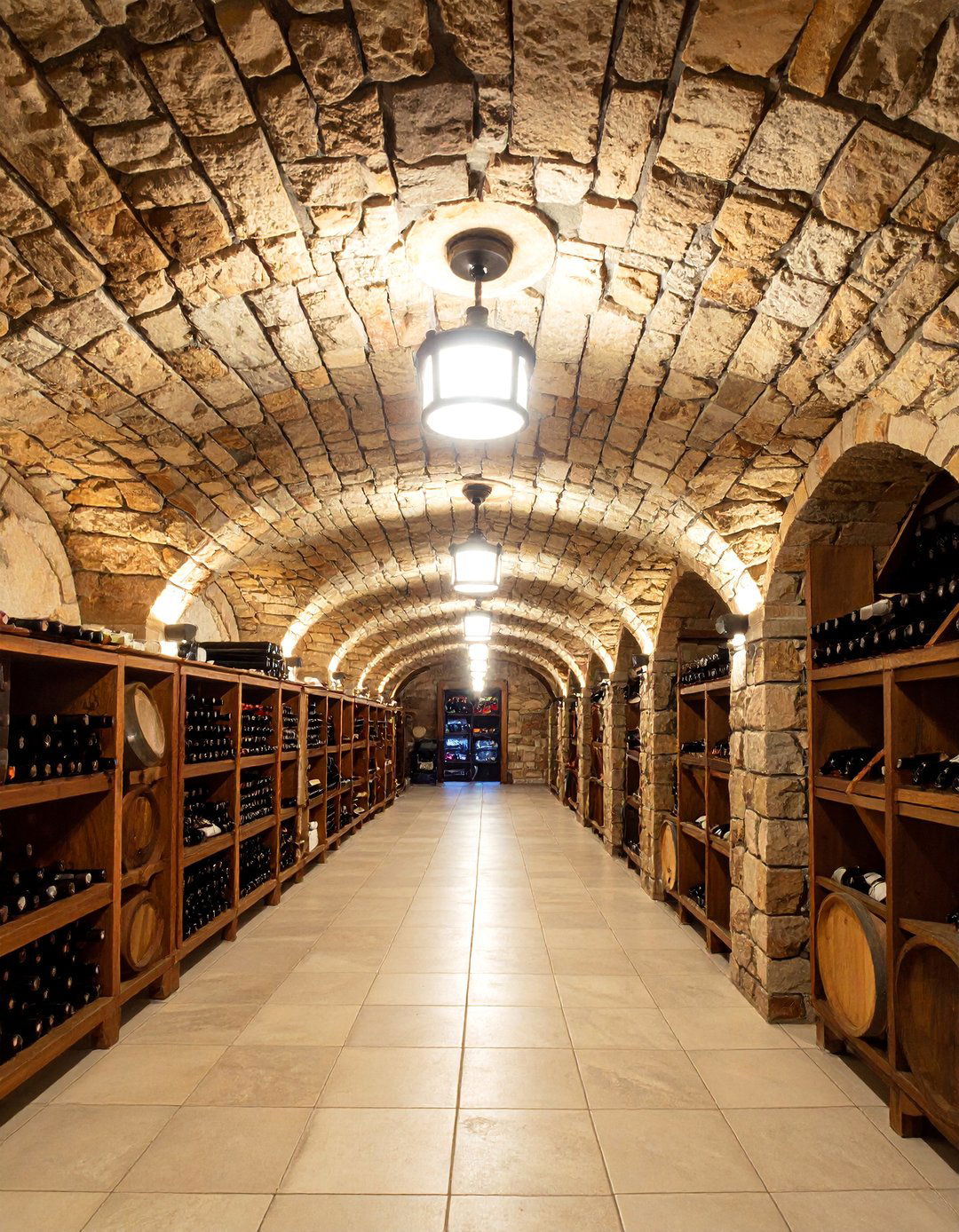
Stone-look ceiling tiles bring natural texture and earthy sophistication to basement spaces. These lightweight tiles mimic granite, slate, marble, and other stone surfaces while remaining practical for overhead installation. The realistic textures and color variations create organic, natural feelings that counteract typical basement sterility. Available in neutral earth tones and dramatic dark colors, they complement both traditional and contemporary design schemes. The stone appearance works particularly well in basements with natural elements like exposed stone walls or brick. These tiles resist moisture and maintain their appearance in humid basement conditions. The surface textures help hide minor installation imperfections while adding visual interest. Installation follows standard drop ceiling procedures, and the lightweight construction won't stress grid systems. The natural appearance transforms basements into sophisticated gathering spaces that feel connected to nature rather than sterile and artificial.
18. Copper Metallic Finish Ceiling Design

Copper metallic ceiling tiles create warm, luxurious atmospheres in basement spaces. These decorative tiles feature copper finishes ranging from bright penny copper to aged patina effects, adding sophisticated metallic warmth overhead. The copper surface reflects warm light beautifully, creating inviting, cozy environments. Available in smooth, hammered, and embossed textures, they provide various aesthetic options while maintaining the signature copper appearance. These tiles work exceptionally well in basement bars, wine cellars, and entertainment areas where upscale ambiance is desired. The metallic finish complements both traditional and contemporary design schemes, particularly those featuring warm wood tones and rich colors. Installation follows standard drop ceiling procedures, and the lightweight construction makes handling easy. The copper appearance ages gracefully, developing natural patina over time. The warm metallic glow transforms ordinary basements into sophisticated spaces reminiscent of upscale restaurants and hotels.
19. Mixed Material Eclectic Ceiling Design
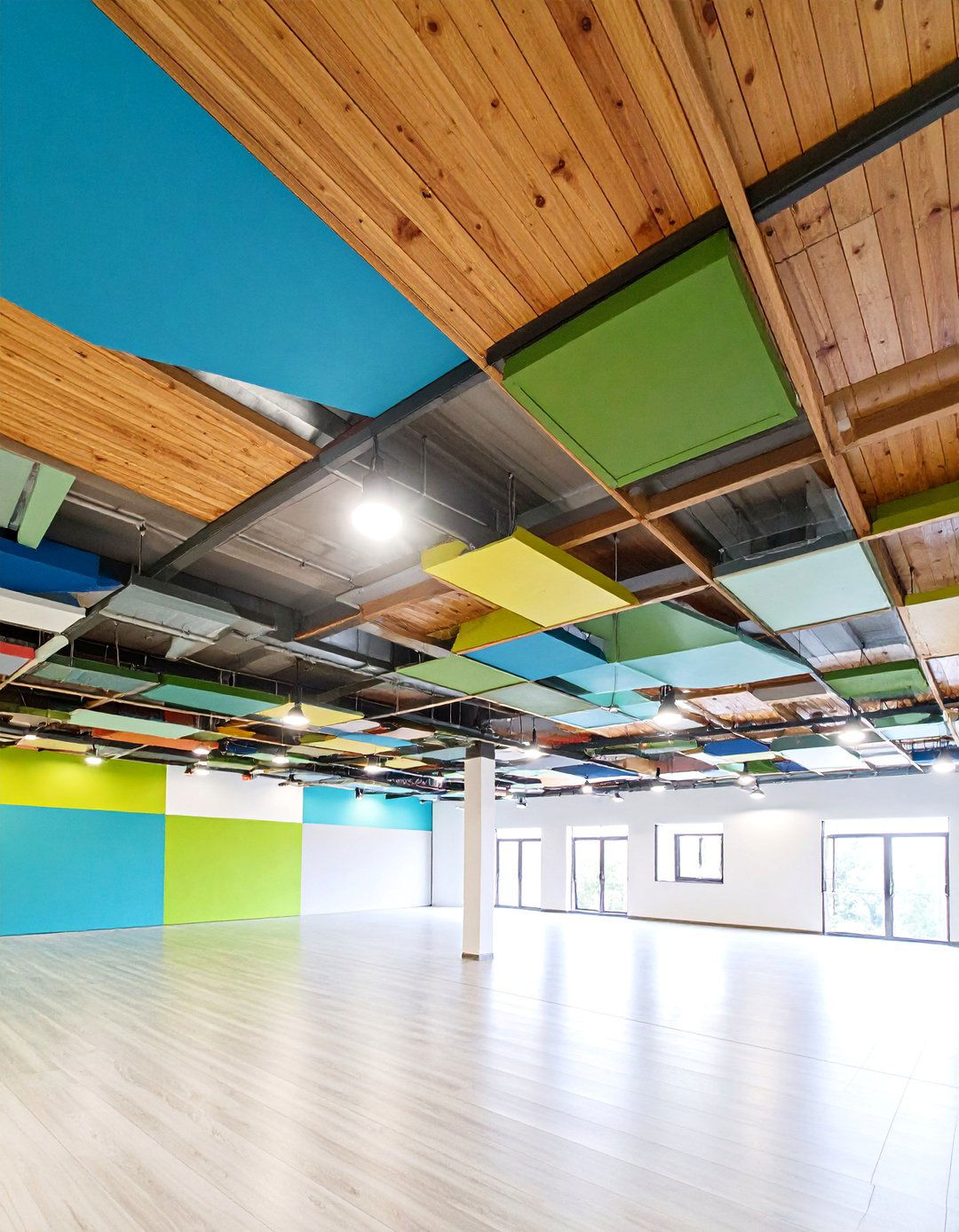
Eclectic ceiling designs combine multiple tile types, materials, and finishes to create unique, personalized appearances. This approach might mix wood-look tiles with metal accents, combine different colors or textures, or incorporate various material types throughout the space. The eclectic strategy allows creative expression while maintaining drop ceiling functionality. Popular combinations include wood and metal, different colored tiles in patterns, or mixing textured and smooth surfaces. This design works particularly well in creative spaces, artist studios, or unique entertainment areas where conventional approaches feel too limiting. The mixed approach can define different areas within large basement spaces, using ceiling materials to create visual zones. Installation requires careful planning to ensure pattern consistency and structural compatibility. The result is completely unique ceiling treatments that reflect personal style while solving practical basement needs.
20. Translucent Backlit Ceiling Panel System

Translucent ceiling panels with backlighting create dramatic, even illumination throughout basement spaces. These panels diffuse light sources above, creating soft, uniform lighting that eliminates harsh shadows and bright spots. Available in various opacity levels and colors, they can create everything from bright daylight effects to colorful mood lighting. The backlit approach works exceptionally well in home theaters, meditation spaces, and modern entertainment areas. LED lighting behind panels provides energy-efficient illumination with minimal heat generation. Some systems offer color-changing capabilities for special effects or mood lighting. The translucent panels hide light sources while providing consistent illumination across large areas. Installation requires electrical work for lighting systems but maintains standard drop ceiling accessibility. The dramatic lighting effect transforms basement environments into sophisticated, modern spaces that feel nothing like traditional basements.
21. Beadboard Style Drop Ceiling Panels

Beadboard ceiling panels bring cottage charm and traditional elegance to basement spaces. These panels replicate classic tongue-and-groove beadboard in lightweight, moisture-resistant materials suitable for basement conditions. The characteristic linear grooves create visual texture and traditional architectural interest overhead. Available in white, cream, and painted colors, they complement farmhouse, cottage, and traditional design schemes. The beadboard pattern works particularly well in basement guest bedrooms, family rooms, and cozy gathering spaces where residential charm is desired. These panels can be installed in standard drop ceiling grids or surface-mounted for different visual effects. The traditional appearance softens industrial basement elements while adding warmth and character. Installation is straightforward, and the lightweight construction won't stress existing structures. The cottage-style appearance transforms sterile basement spaces into charming, inviting rooms that feel like natural extensions of main-floor living areas.
22. High-Gloss Lacquered Ceiling Tiles

High-gloss lacquered ceiling tiles create sophisticated, modern appearances with dramatic light reflection properties. These smooth, shiny surfaces bounce light throughout basement spaces, maximizing brightness while creating sleek, contemporary aesthetics. Available in classic white, bold black, or accent colors, they provide clean, modern design elements. The glossy finish works particularly well in contemporary basement designs where clean lines and modern materials are emphasized. These tiles resist moisture and staining while maintaining their lustrous appearance over time. The reflective properties make low basement ceilings appear higher by creating visual depth. Installation follows standard drop ceiling procedures, though the glossy surfaces require careful handling to avoid fingerprints and scratches. The sophisticated appearance rivals high-end commercial installations while remaining practical for residential applications. The dramatic reflection creates dynamic lighting effects that transform ordinary basements into stunning, modern living spaces.
23. Cork Ceiling Tile Natural System

Cork ceiling tiles provide natural, sustainable materials with excellent acoustic properties for basement applications. These tiles feature natural cork surfaces that offer warmth, texture, and superior sound absorption. The organic material creates comfortable, natural environments while providing practical benefits like moisture resistance and thermal insulation. Available in natural cork colors and various textures, they complement earth-tone design schemes and sustainable building practices. Cork tiles work exceptionally well in basement home offices, reading areas, and quiet spaces where acoustic comfort is important. The natural material is renewable, biodegradable, and environmentally friendly. Installation follows standard drop ceiling procedures, and the lightweight construction makes handling easy. The natural texture helps hide minor imperfections while adding organic visual interest. The sustainable approach appeals to environmentally conscious homeowners while creating comfortable, naturally beautiful basement environments that feel healthy and welcoming.
24. Faux Wood Beam Grid Ceiling
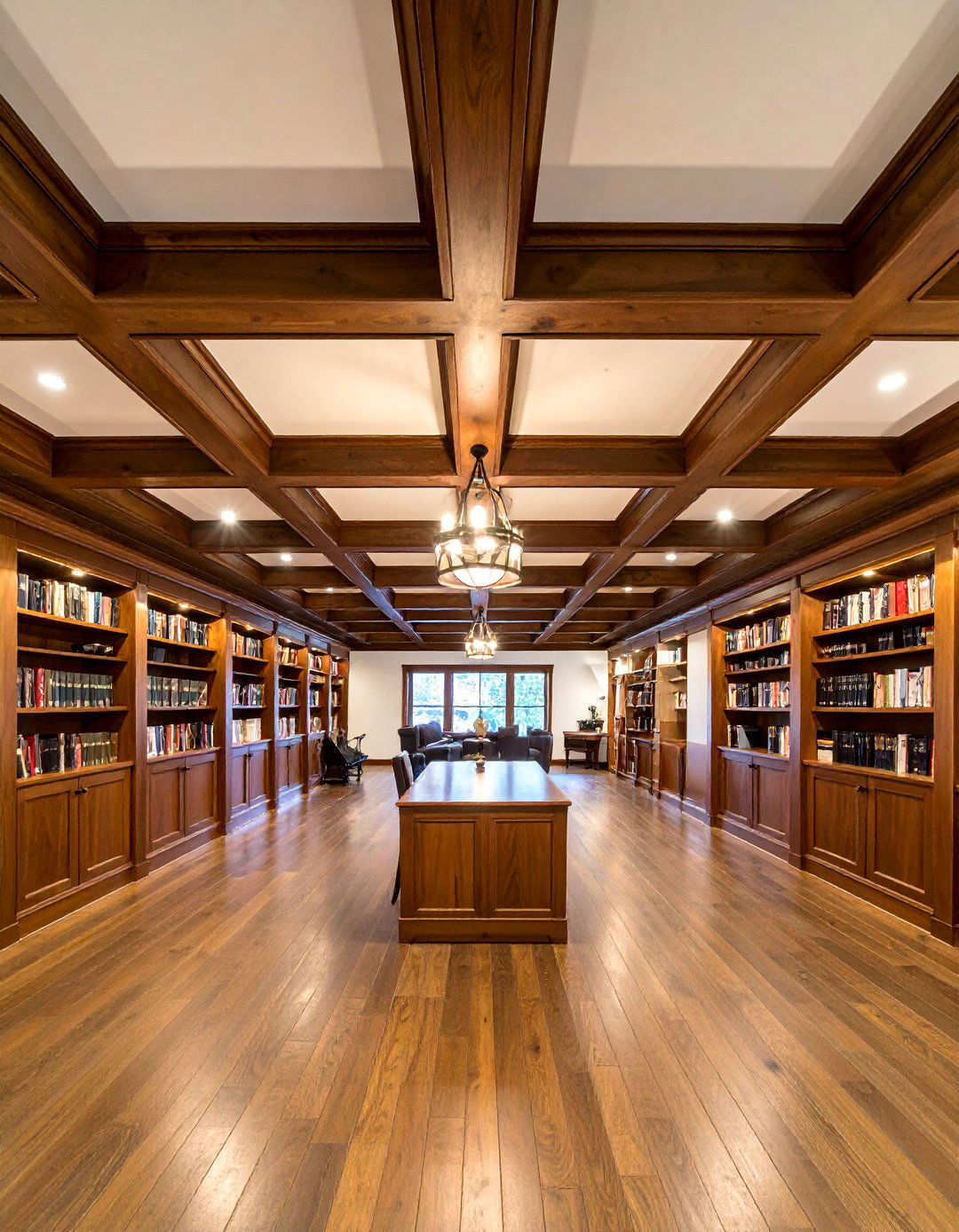
Faux wood beam ceiling systems create traditional, architectural interest while maintaining drop ceiling functionality. These systems use lightweight polyurethane beams that replicate real wood appearance in grid patterns across basement ceilings. Available in various wood finishes from rustic pine to rich mahogany, they add substantial visual weight and traditional character. The beam grid creates coffered effects while maintaining access to utilities through removable panels between beams. This approach works particularly well in traditional basement designs where architectural substance is desired. The faux construction resists moisture, insects, and dimensional changes that affect real wood. Installation requires mounting beams to ceiling structure before adding infill panels. The result creates impressive, traditional ceiling treatments that rival expensive custom millwork. The substantial appearance transforms ordinary basements into architecturally significant spaces with traditional charm and sophisticated appeal.
25. Perforated Sound-Absorbing Ceiling Tiles
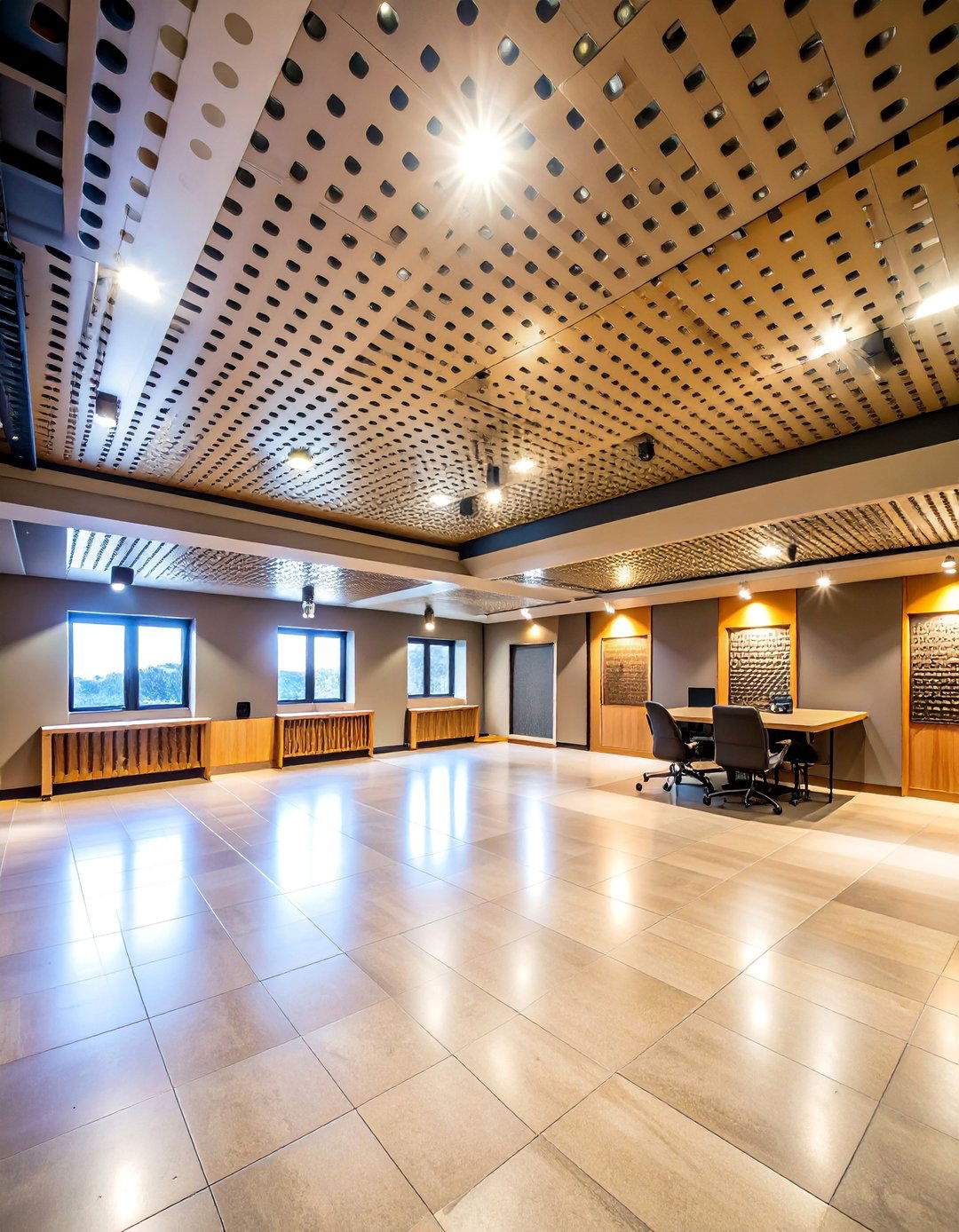
Perforated sound-absorbing ceiling tiles provide maximum acoustic control for basement spaces requiring superior noise management. These specialized tiles feature thousands of tiny holes that allow sound waves to penetrate into acoustic backing materials, dramatically reducing noise and reverberation. Available in various hole patterns and sizes, they can provide different acoustic properties while maintaining attractive appearances. The perforated design works exceptionally well in home theaters, music rooms, and family spaces where sound control is critical. These tiles often feature high-quality acoustic backing materials that absorb up to 85% of sound energy. The technical performance doesn't compromise aesthetics, with clean, modern appearances that complement contemporary design schemes. Installation follows standard procedures, and the acoustic benefits are immediately noticeable. The superior sound control creates comfortable, quiet environments perfect for focused activities, entertainment, or relaxation in basement spaces.
Conclusion:
Basement drop ceiling solutions offer endless possibilities for transforming underground spaces into beautiful, functional areas. From traditional acoustic tiles to modern metallic finishes, rustic wood looks to sophisticated coffered systems, there's a perfect ceiling solution for every basement project and budget. The key is matching ceiling materials to intended use, moisture conditions, and design preferences while maintaining practical access to utilities. These diverse options prove that basement ceilings can be architectural features rather than afterthoughts, creating spaces that rival main-floor rooms in both beauty and functionality.


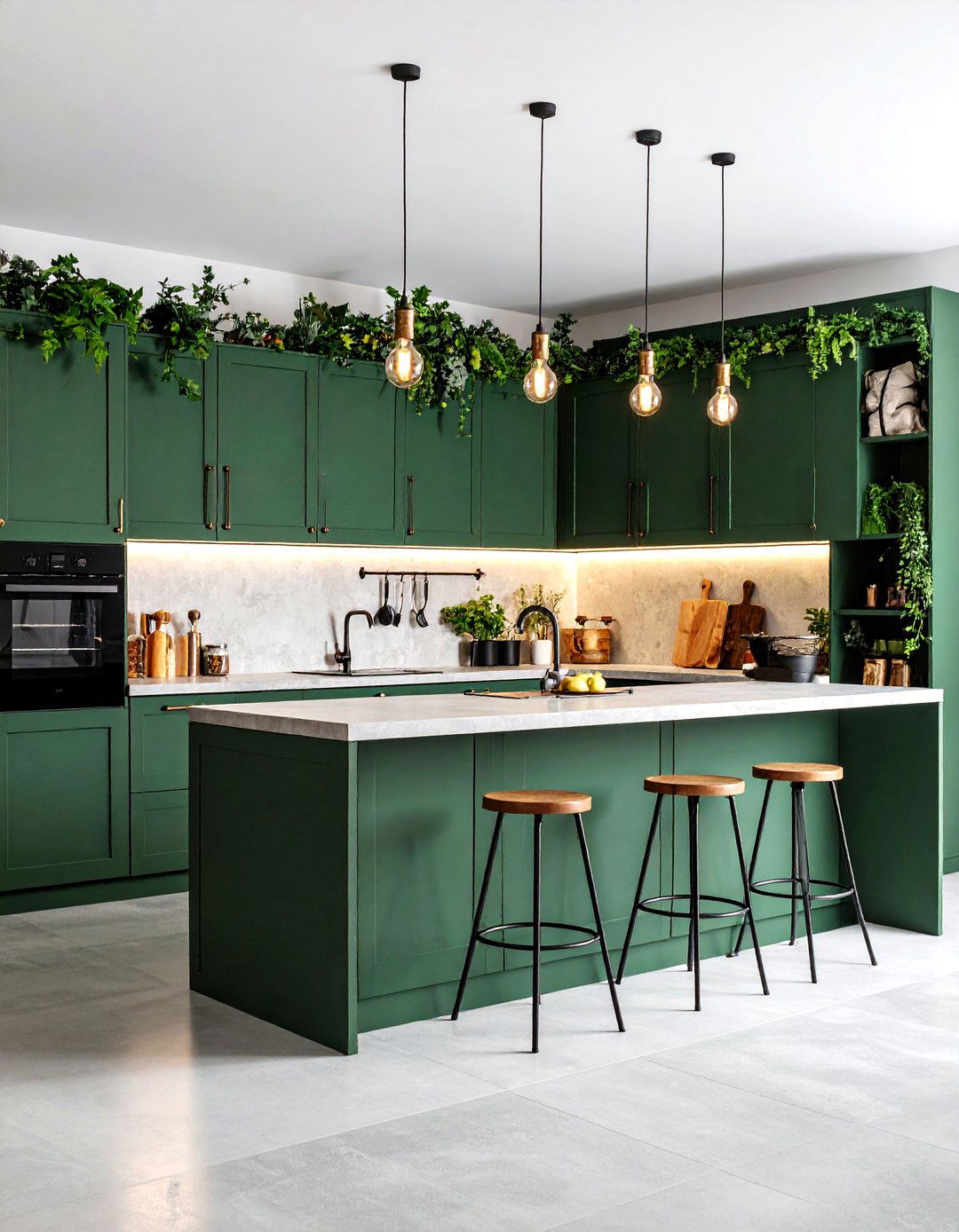
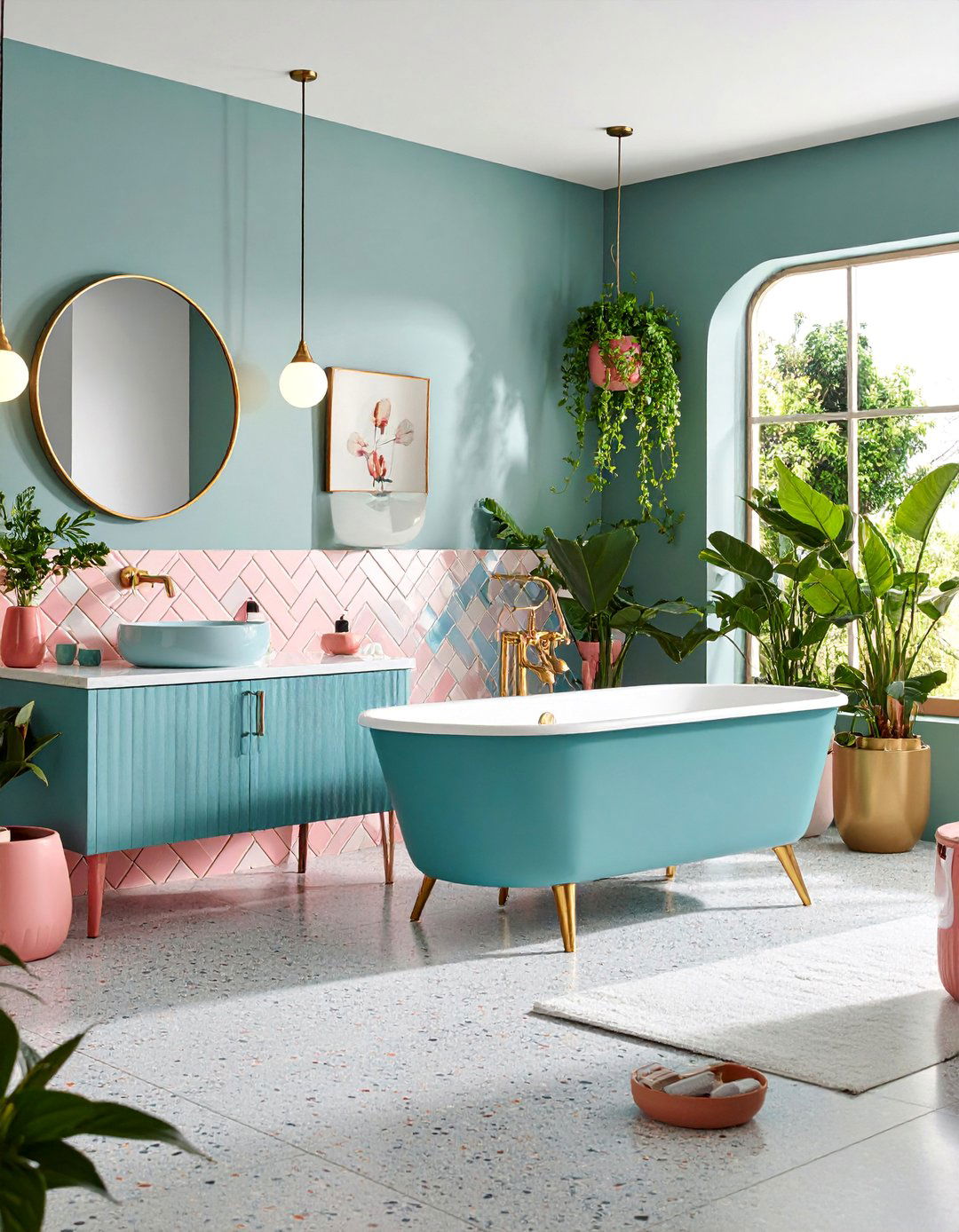


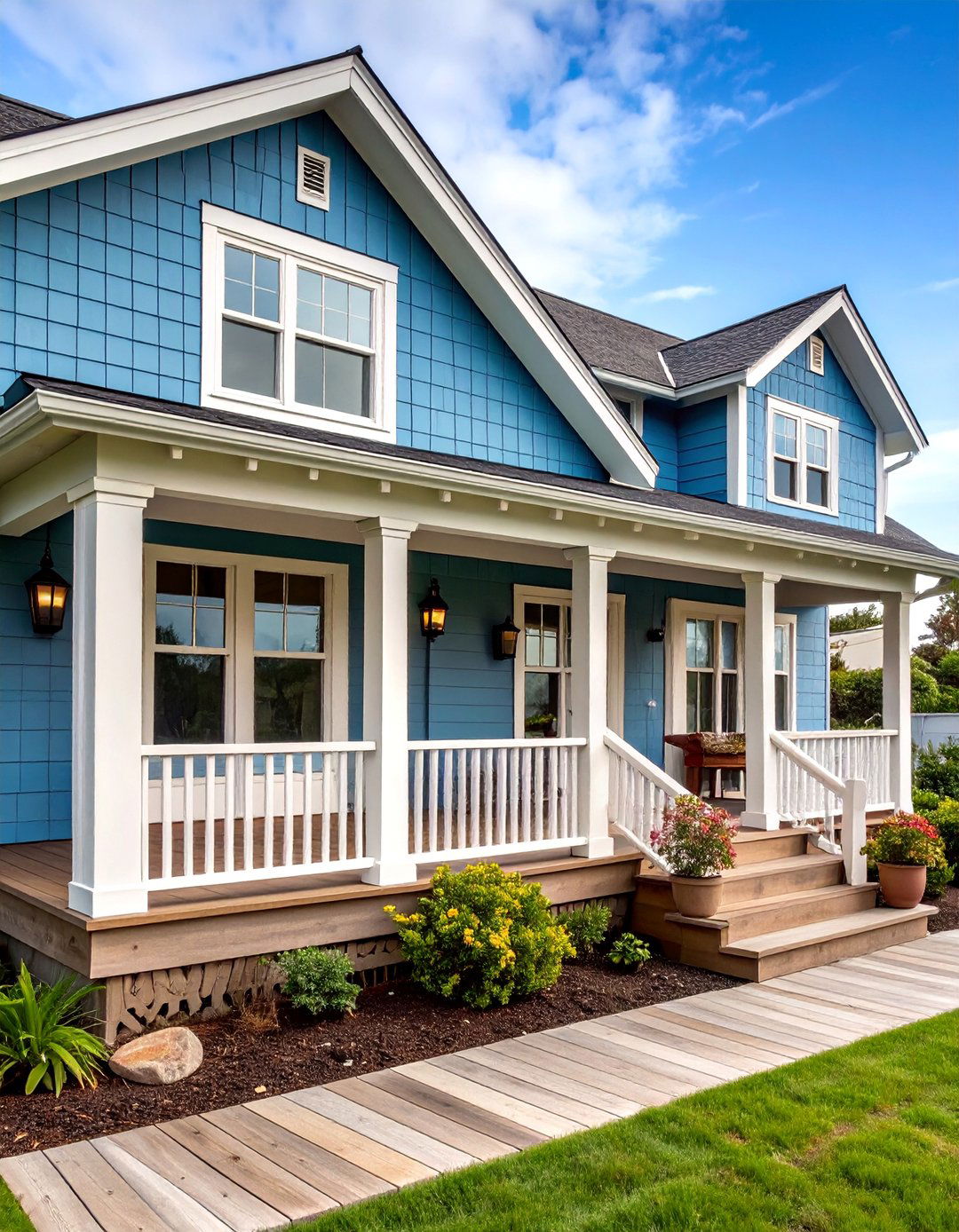
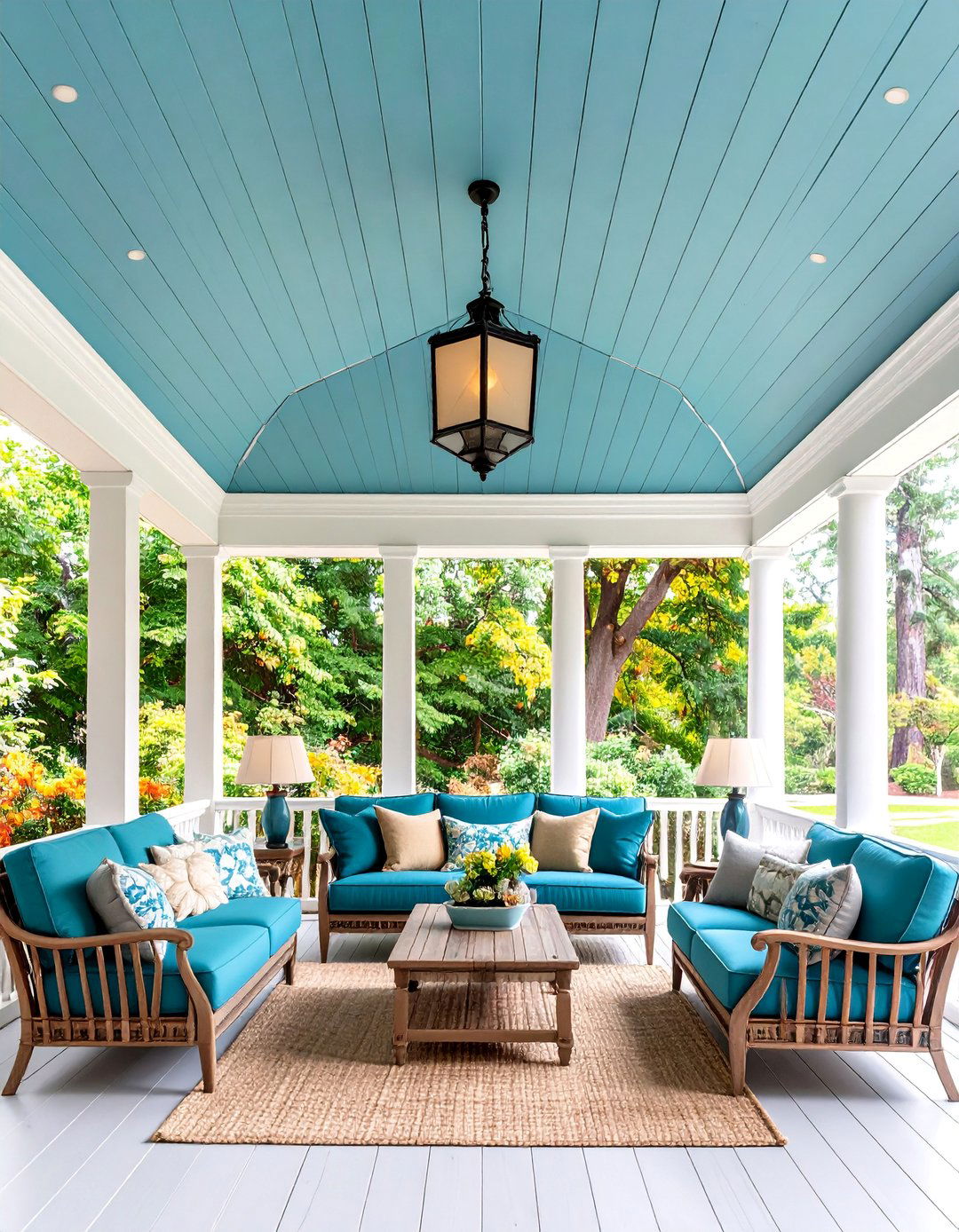
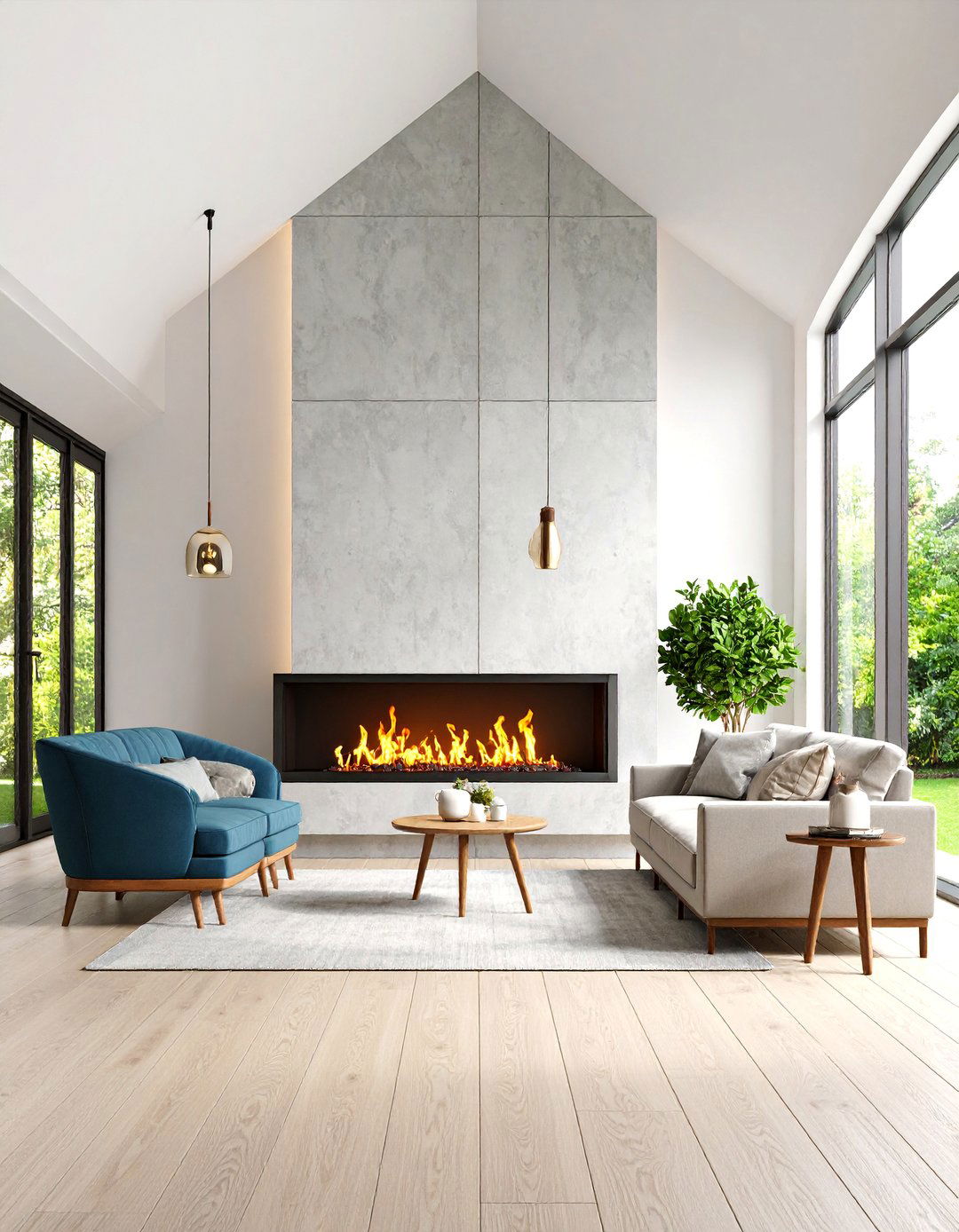





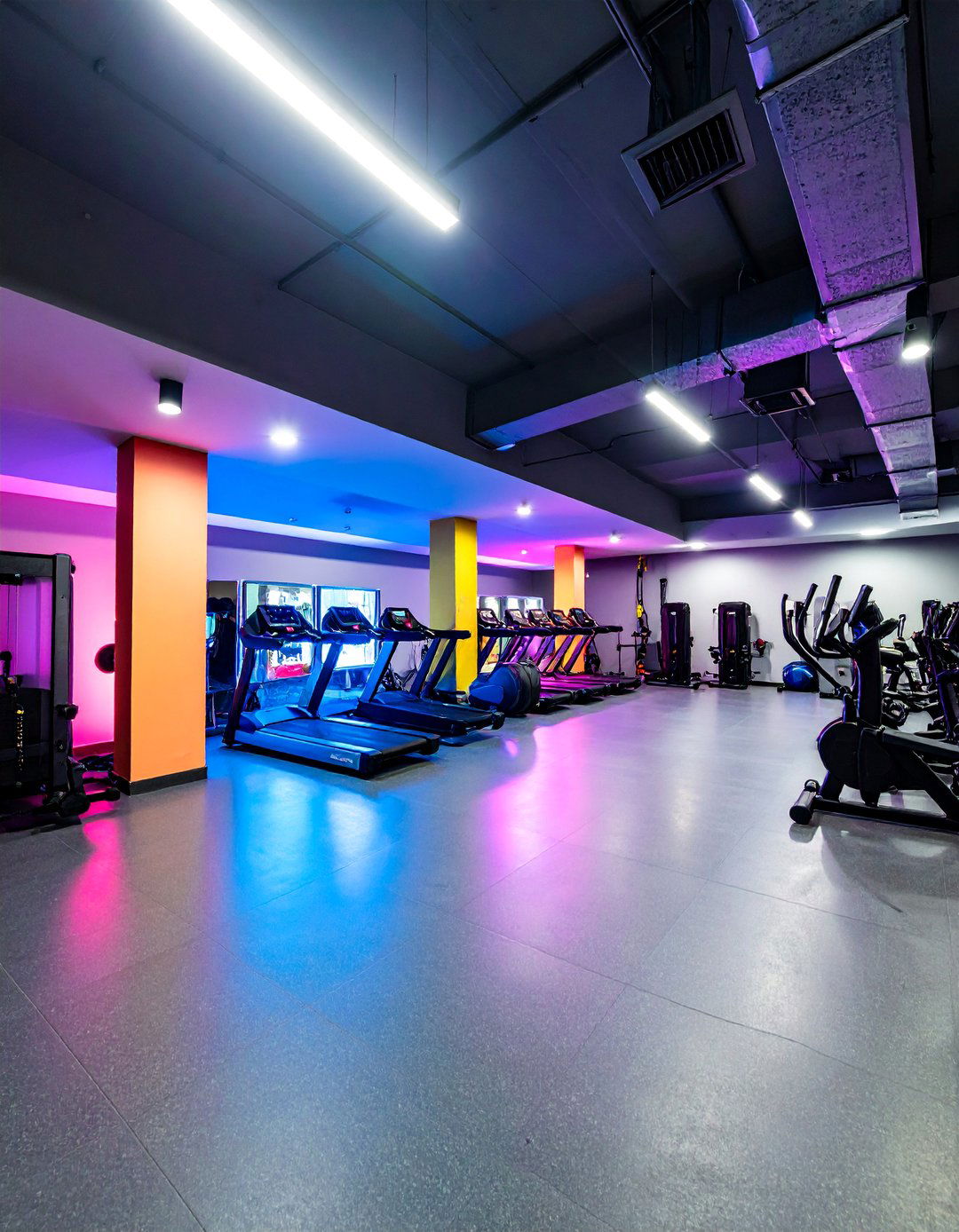

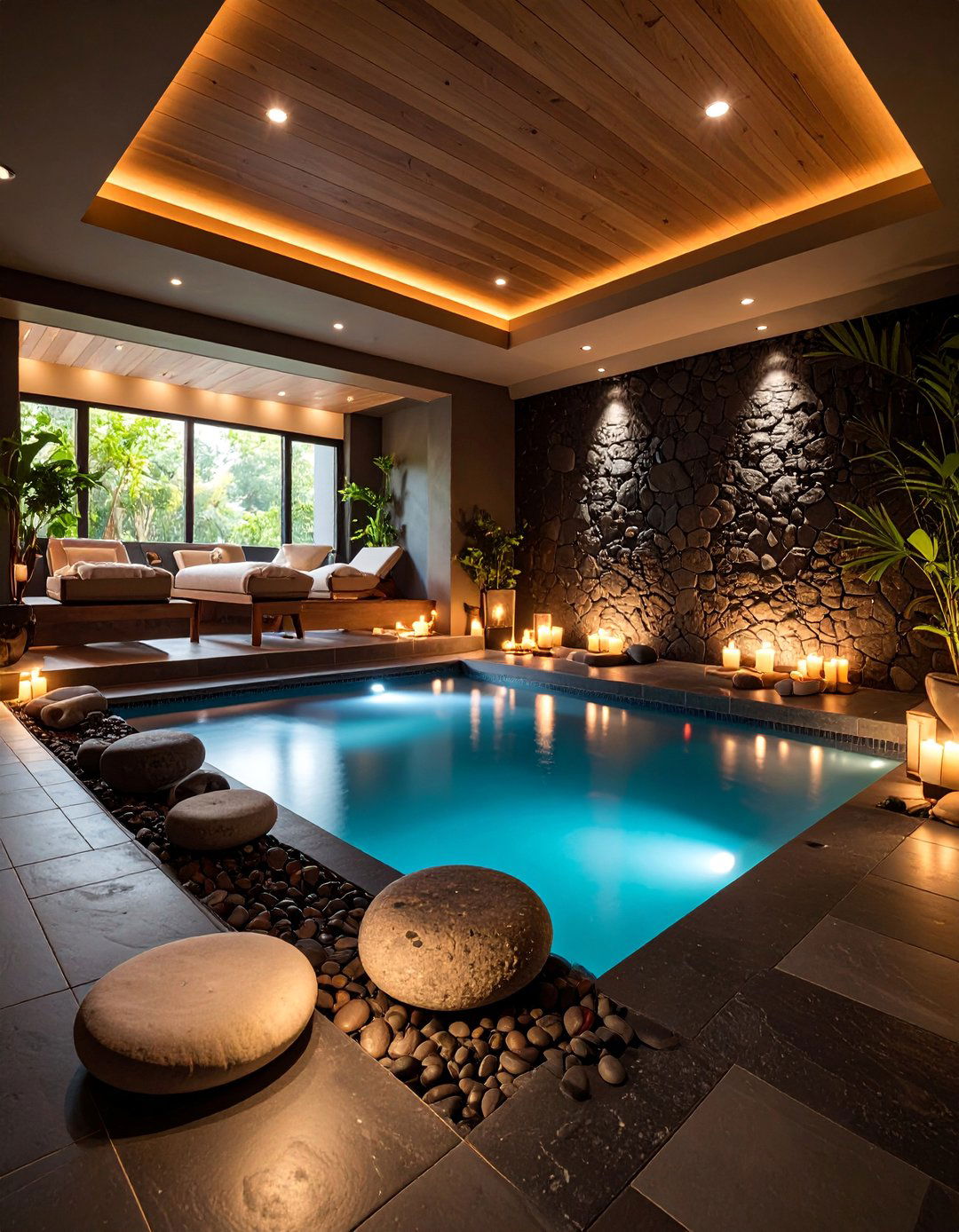
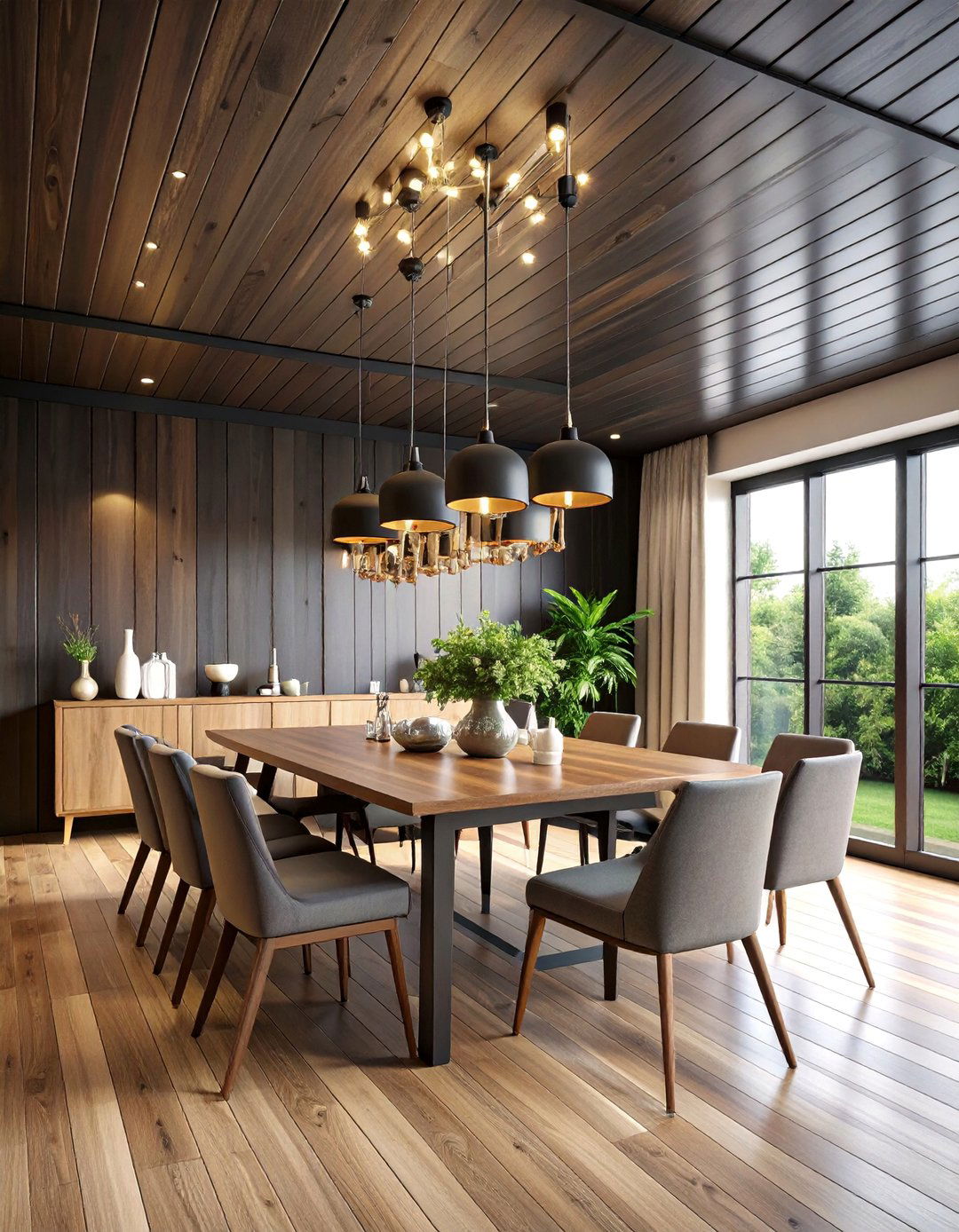
Leave a Reply